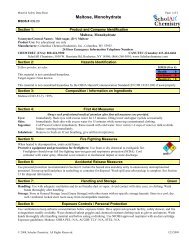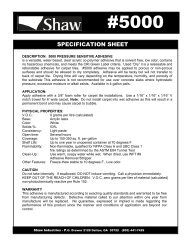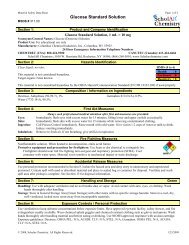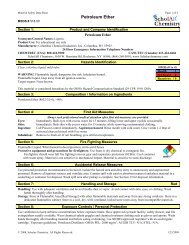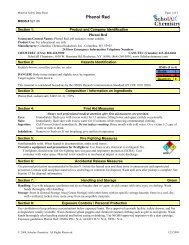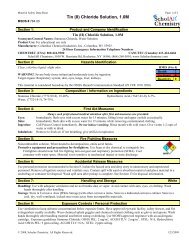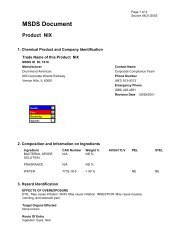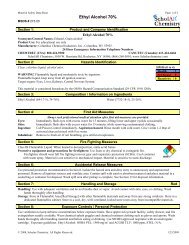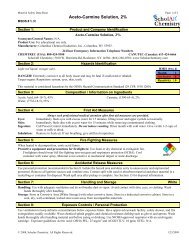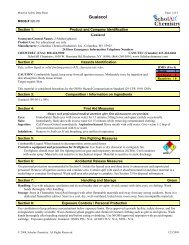Minwax Sanding Sealer.pdf
Minwax Sanding Sealer.pdf
Minwax Sanding Sealer.pdf
Create successful ePaper yourself
Turn your PDF publications into a flip-book with our unique Google optimized e-Paper software.
5600 page 2<br />
SIGNS AND SYMPTOMS OF OVEREXPOSURE<br />
Headache, dizziness, nausea, and loss of coordination are indications of<br />
excessive exposure to vapors or spray mists.<br />
Redness and itching or burning sensation may indicate eye or excessive<br />
skin exposure.<br />
MEDICAL CONDITIONS AGGRAVATED BY EXPOSURE<br />
None generally recognized.<br />
CANCER INFORMATION<br />
For complete discussion of toxicology data refer to Section 11.<br />
Section 4 -- FIRST AID MEASURES<br />
EYES: Flush eyes with large amounts of water for 15 minutes.<br />
Get medical attention.<br />
SKIN: Wash affected area thoroughly with soap and water.<br />
Remove contaminated clothing and launder before re-use.<br />
INHALATION: If affected, remove from exposure. Restore breathing.<br />
Keep warm and quiet.<br />
INGESTION: Do not induce vomiting.<br />
Get medical attention immediately.<br />
Section 5 -- FIRE FIGHTING MEASURES<br />
FLASH POINT LEL UEL<br />
102 F PMCC 0.9 11.0<br />
FLAMMABILITY CLASSIFICATION<br />
Combustible, Flash above 99 and below 200 F<br />
EXTINGUISHING MEDIA<br />
Carbon Dioxide, Dry Chemical, Foam<br />
UNUSUAL FIRE AND EXPLOSION HAZARDS<br />
Closed containers may explode when exposed to extreme heat.<br />
Application to hot surfaces requires special precautions.<br />
During emergency conditions overexposure to decomposition products may<br />
cause a health hazard. Symptoms may not be immediately apparent. Obtain<br />
medical attention.<br />
SPECIAL FIRE FIGHTING PROCEDURES<br />
Full protective equipment including self-contained breathing apparatus<br />
should be used.<br />
Water spray may be ineffective. If water is used, fog nozzles are<br />
preferable. Water may be used to cool closed containers to prevent<br />
pressure build-up and possible autoignition or explosion when exposed to<br />
extreme heat.<br />
Section 6 -- ACCIDENTAL RELEASE MEASURES<br />
STEPS TO BE TAKEN IN CASE MATERIAL IS RELEASED OR SPILLED<br />
Remove all sources of ignition. Ventilate the area.<br />
Remove with inert absorbent.<br />
Continued on page 3



